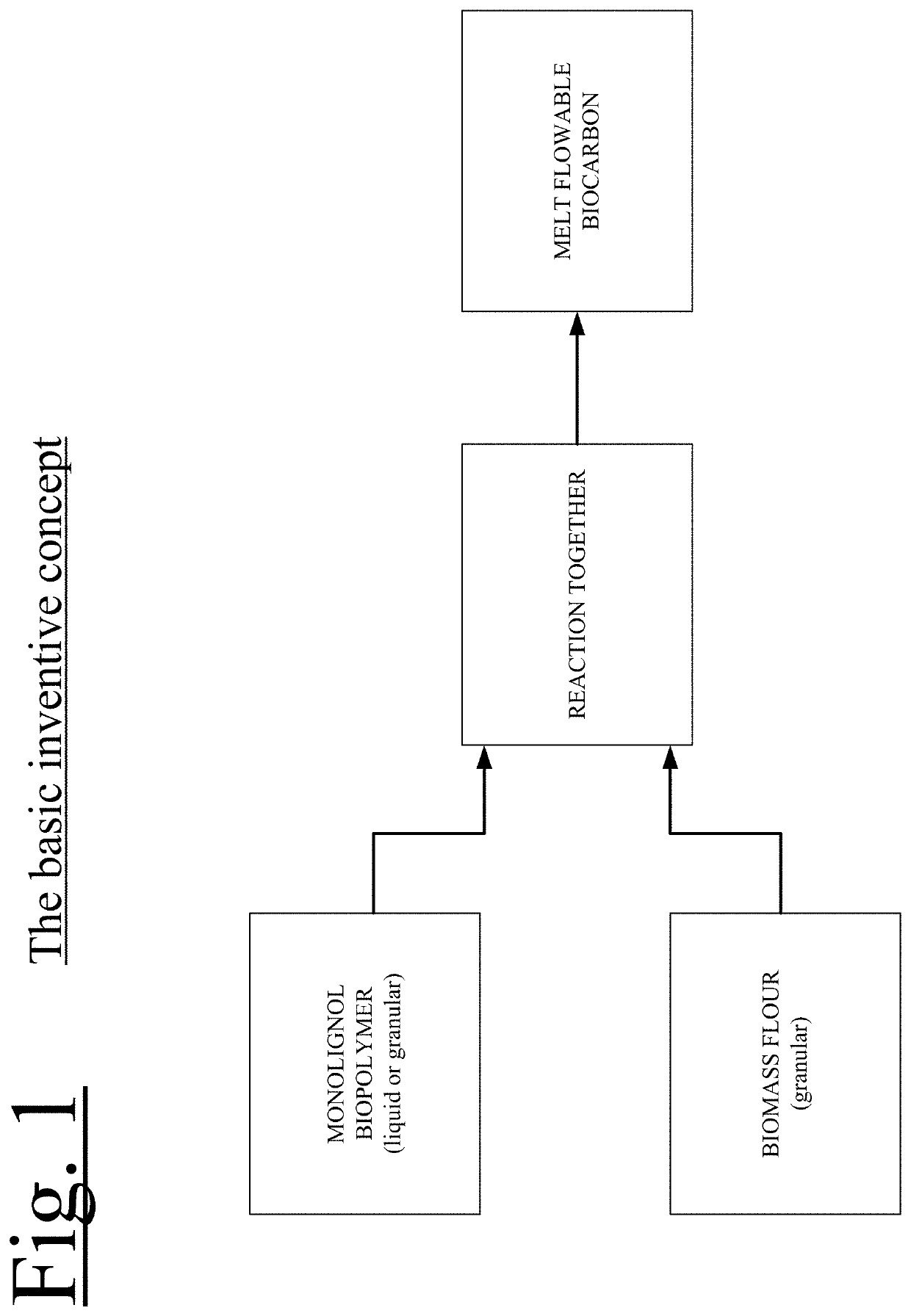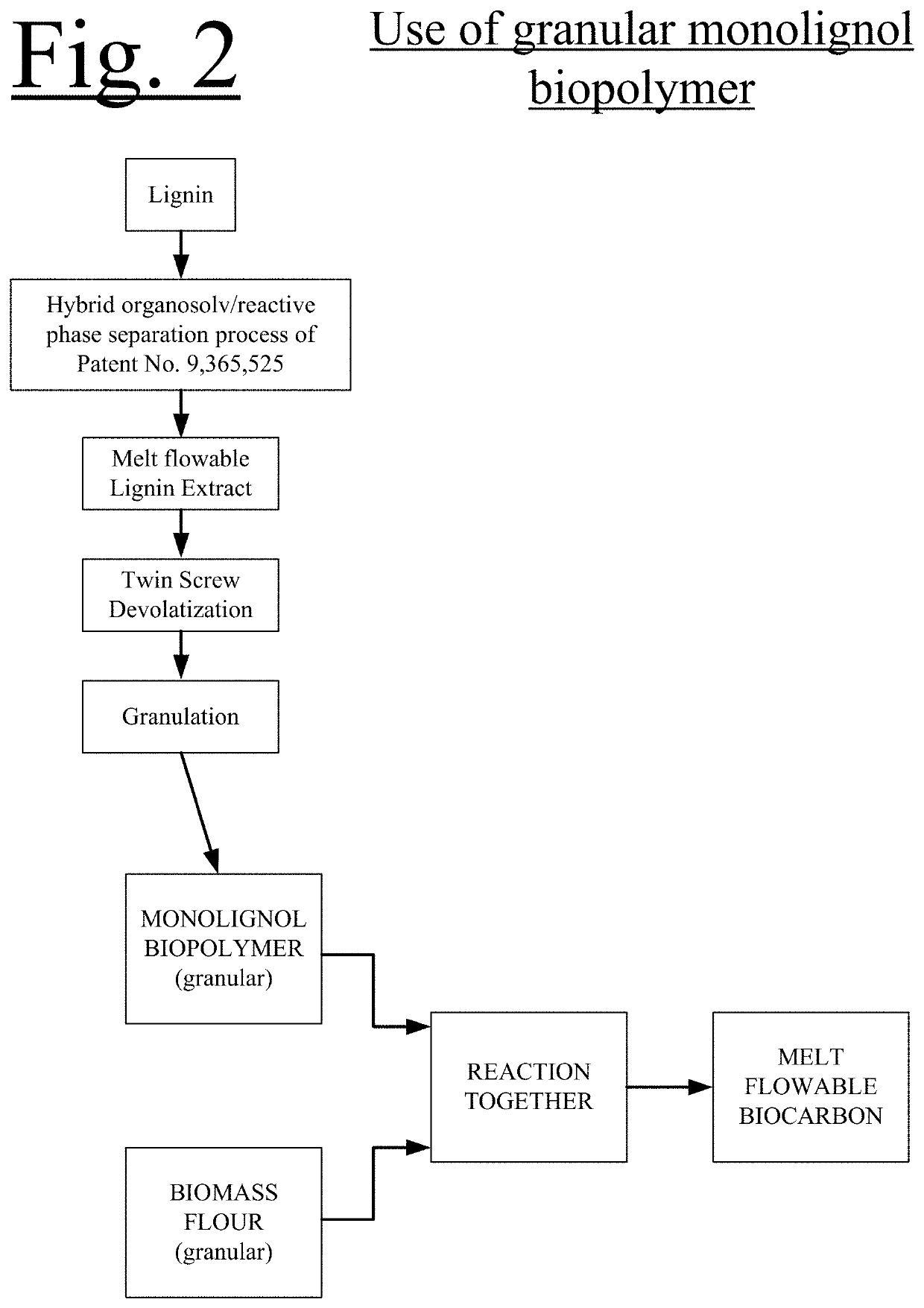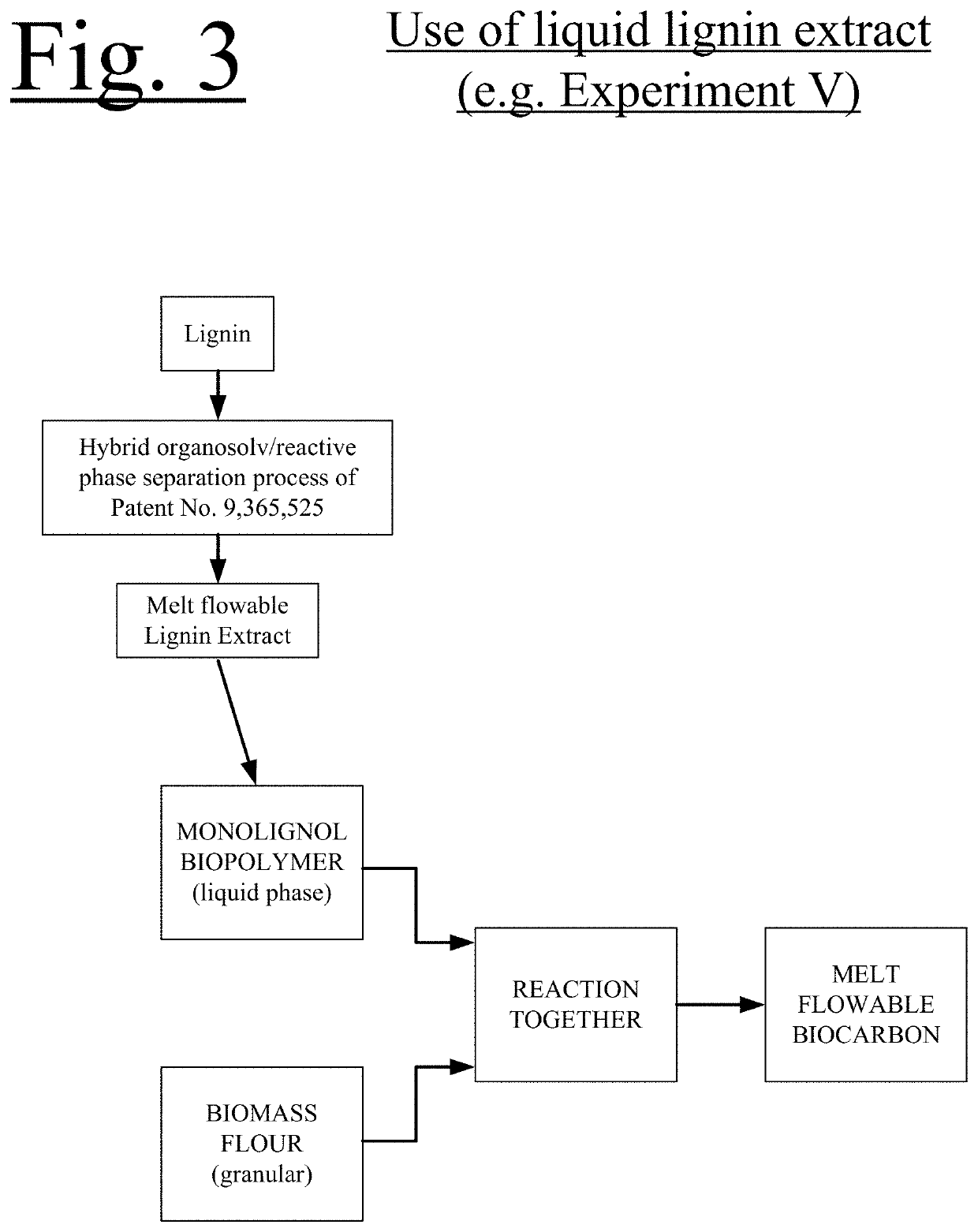Melt flowable biocarbon and method of making same
a biocarbon and flowable technology, applied in the direction of pigmentation treatment, etc., can solve the problems of insufficient water resistance, mold potential, thermal stability,
- Summary
- Abstract
- Description
- Claims
- Application Information
AI Technical Summary
Benefits of technology
Problems solved by technology
Method used
Image
Examples
embodiments
[0072]The present invention chemically reacts Monolignol Biopolymer with a thermally process or thermally modified finely divided biomass flour that allows for adjustable melt flows and ability to run at various common plastic processing temperatures.
[0073]In one embodiment, the thermally processed or thermally modified flour can be in the form of dried wood flour, thermally modified wood flour, torrefaction processed powder, or biochar powder all derived from biomass sources of wood or agricultural residues.
[0074]In another embodiment, a Meltable Lignin Extract from a hybrid organosolv / reactive phase separation cellulosic ethanol reacted with self generated biochemicals process is further reacted and devolatilized to create a stable melt flowable monolignol biopolymer.
[0075]The Biochar can be produced at temperatures ranging from about 400° C. up to about 900° C. Temperatures ranging from 450° C. to around 700° C. in a low oxygen environment. This can produce materials with a high ...
PUM
| Property | Measurement | Unit |
|---|---|---|
| mesh size | aaaaa | aaaaa |
| Temperatures | aaaaa | aaaaa |
| Temperatures | aaaaa | aaaaa |
Abstract
Description
Claims
Application Information
 Login to View More
Login to View More - R&D
- Intellectual Property
- Life Sciences
- Materials
- Tech Scout
- Unparalleled Data Quality
- Higher Quality Content
- 60% Fewer Hallucinations
Browse by: Latest US Patents, China's latest patents, Technical Efficacy Thesaurus, Application Domain, Technology Topic, Popular Technical Reports.
© 2025 PatSnap. All rights reserved.Legal|Privacy policy|Modern Slavery Act Transparency Statement|Sitemap|About US| Contact US: help@patsnap.com



